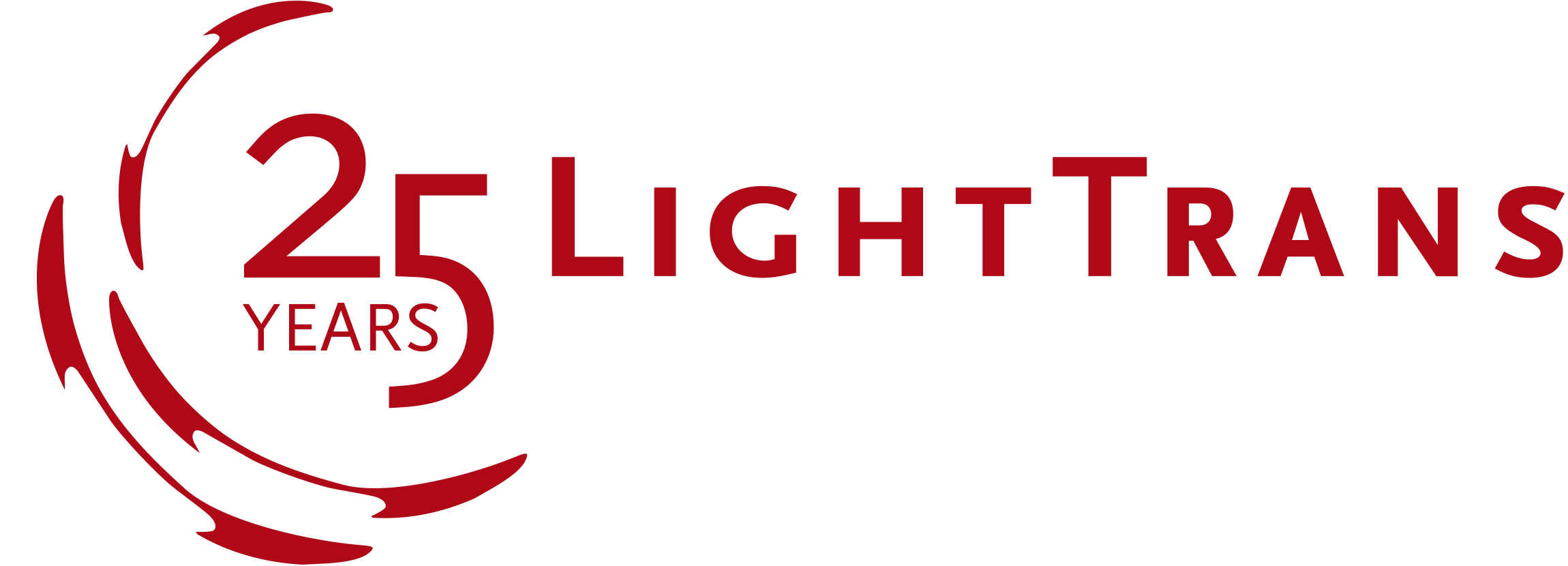What’s new in our Optical Modeling and Design Software?
Analysis of High-NA Lenses
High-NA (numerical aperture) lenses are typically used in optical microscopy or lithography, among other applications. It is known that the impact of the vectorial nature of electromagnetic fields is not negligible in such situations. A well-known effect that exemplifies the above is the asymmetry exhibited by the focal spot generated by a high-NA lens focusing a linearly polarized circular beam: the focal spot ceases to be circular and appears elongated. We show these effects for specific examples of objective lenses and demonstrate how to analyse focal spots using different detectors in VirtualLab Fusion.
Read morePoisson Spot Simulation & Double-Slit Modeling
The first-time observation of Poisson’s (or Arago’s) spot in 1818 constituted one of the most relevant experiments in the history of optics, helping discard the (at the time) favored position of attributing a corpuscular nature to light. When Fresnel presented his theory of diffraction before the French Academy of Sciences, Poisson, a member of the committee, scoffed at the fact that Fresnel’s approach predicted a bright spot in the shadow of a circular obstacle placed in the way of a beam of light. Here, we demonstrate this effect in VirtualLab Fusion, and, with the help of programmable functions, also the diffraction effects caused by different obstacles can be studied. For the latter case, we present an example of the modeling of a double-slit via a functional embodiment.
Read moreSlanted Gratings
Slanted gratings have been found to be of advantage in lightguide-based display systems for AR/MR applications. Such gratings often have periods that are comparable to the wavelength. Therefore, rigorous computational methods must be used to evaluate their performance. We show, in accordance with existing examples from literature, how to model slanted gratings with different geometries using the Fourier modal method (FMM) in VirtualLab Fusion. Additionally, customized slanted gratings can be designed with the help of parametric optimization.
Read moreLarge-Angle Dot Projector
A large-angle dot projector is the key optical component in Apple’s Face ID, which casts a structured dot pattern onto the face so as to create a 3D facial map. The dot projection system often employs an array of VCSEL units. Light from the VCSEL array is first collimated by a lens system, and then replicated by a two-dimensional grating into a large angular range. Simulation of such systems would require an appropriate model of the VCSEL source, a dependable handling of the lens system, and a rigorous method for gratings with relatively small periods. In VirtualLab Fusion, this connection of different field solvers is par for the course; we use this ability below in a demonstration of how a dot projector works.
Read moreTightly Focused Light
How to focus light into an ever-smaller spot is an ever-present question in the optics community. Various approaches with the aim to focus light tightly have been developed, particularly of late. Investigation of light focusing under a high-NA configuration often requires fully vectorial electromagnetic simulation techniques. We demonstrate, using the software VirtualLab Fusion, how different polarization states (e.g. radial) and aperture shapes (e.g. annular) may influence the electromagnetic field in the focal region. Such analyzes can be done either with idealized lenses, or with real lenses with explicit structure and material information.
Read moreCustomize VirtualLab Fusion to Fit Your Needs!
We would like to provide full flexibility in VirtualLab Fusion so as to be able to meet the specific needs of the wide range of modeling or design tasks that can be tackled with the software. This versatility can be realized with various types of programmable elements in VirtualLab Fusion, from source to detectors, through components, and many more. Here we demonstrate two examples: a customized analyzer and a module. In the first example, a programmable grating analyzer is used to read and display specific grating diffraction properties for further analysis; the second example shows how to control an IFTA design via a customized module, avoiding the graphical user interface of the software.
Read moreHybrid Lens Simulation
Hybrid optical lenses with both refractive and diffractive surfaces have already proved useful in many applications. As an example, we showcase a hybrid eyepiece with just such a construction, i.e. it consists of both refractive and diffractive surfaces. We analyze in particular how to exploit the dispersion property of diffractive optics to correct chromatic aberration. Since the Summer Release 2019, VirtualLab Fusion supports the import of Binary 2 surfaces from Zemax OpticStudio®, a feature that facilitates a convenient workflow for the analysis of such hybrid lens systems.
Read moreEOS Diffractive Optics 2019 – Program Overview
We are happy to announce that EOS has published the program of the conference. Take the chance and meet experts to talk about their latest research results in the field of photonics.
Jena, Germany | 16 – 19 September
Read more










